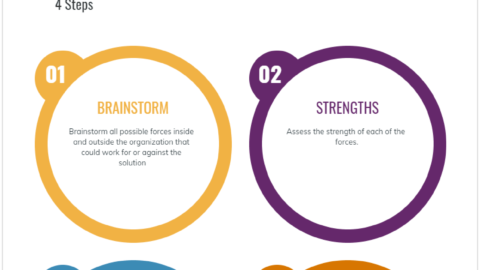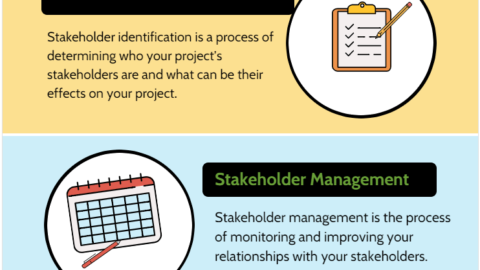Stakeholder Analysis and Stakeholder Management
Parties involved in a project often have various requirements. In general, it is difficult to understand and document the particular requirements of the stakeholders. Therefore, project teams spend most of their time with communication to clarify the needs of various participants. The term “Stakeholder” is often described as people or groups that can affect or be affected by the outcomes of a project. That means the employees, directors, government, investors, communities are examples of stakeholders. They may have positive or negative impacts on the project’s goals and objectives. Stakeholders’ requirements and expectations can be different based on their level of interest in the project’s objectives. In this article, we will discuss stakeholder analysis, classification, and management strategy.
Table of Contents
Below steps are recommended for a successful stakeholder management process.
- Stakeholder Analysis and Classification
- Establishing a Stakeholder Management Strategy
What are Stakeholders?
All the projects have internal and external parties that interest in the outcome or the product of the project. These parties often change or their interests may change as the project progresses. This causes various technical or other requirements which the project team may have assumed to be stable.
In project management, the term stakeholder is used to describe individuals, groups, or organizations which have interests in the outcome of the project. They may have the power or influence to supply resources to affect the outcome of the project. Stakeholders can be individuals who are involved in the project actively.
Stakeholder Analysis and Classification in Project Management
The stakeholder analysis and classification process come after completing the stakeholder identification process. Project teams employ various tools and techniques to perform stakeholder analysis in order to understand the needs and expectations of parties inside and outside the project. Understanding their attributes and interrelationships may be helpful to plan and manage the project strategically.
Stakeholder classification aims to group stakeholders according to their power, level of effect, and influence on the project.
The PMBOK Guide, recommends below four models for classifying stakeholders
1. Power/interest grid
2. Power/influence grid
3. Influence/impact grid
4. Salience model
Basically, stakeholders can be classified into four groups below;
Power and Interest
Stakeholders are classified according to their power and level of interest in the project’s outcome. The power/interest grid can be used for classification.
Power and Influence
Stakeholders are classified according to their power and level of influence on the project’s outcome. Power/influence grid can be used for classification.
Influence and Impact
Stakeholders are classified according to their influence and impact on the project’s outcome. Influence/impact grid can be used for classification.
Power, Urgency, and Legitimacy
Stakeholders are classified according to their power, urgency, and legitimacy. The salience model can be used for classification.
Stakeholder Management Strategy
Stakeholder analysis and management strategies include gathering information, identify stakeholder groups, stakeholder mapping, and monitoring. Stakeholder classification is very important for establishing the right stakeholder management strategy.
The power and Interest model is the most common model used for stakeholder classification. In this model, there is a chart with x and y-axis, where the x-axis represents the degree of interest and the y-axis represents the degree of power.

Stakeholder Analysis – Power and Interest Model
Stakeholders with a high level of power and interest are on the right top of the matrix. They may be strongly supportive or otherwise. Since their interest is high, they have opinions.
Stakeholders with a low level of power and interest are on the left bottom of the matrix. They may have no strongly formed views.
This matrix provides you a basic analysis that helps you to create your basic management and communication strategy.
In this model, stakeholders can be grouped into four classes.
- Stakeholders with high power and high interest should be managed closely. If they are positive and supportive, you can provide information and maintain their support. If they are negative, be careful and put effort into dealing with them.
- Stakeholders with high power and low interest should be kept satisfied. Because they have power. If their interests change over time, they may have positive or negative effects on the project’s goals.
- Stakeholders with low power and high interest should be kept informed. If they are positive, use them to lobby other stakeholder groups and maintain their interests. If they are negative, don’t spend too much time with them.
- Stakeholders with low power and low interest should be monitored. If they are positive, provide them information because their position may change over time. If they are negative, don’t spend too much time with them.
Like other models, the power and interest model is helpful for managing stakeholders and their requirements. Establishing an efficient stakeholder analysis and management strategy is important for saving time while managing stakeholders. Because a project manager can not make the same effort while managing stakeholders with different priorities. Inherently, managing stakeholders with high power and interest is more time-consuming than managing stakeholders with low power and interest.
A project communications plan helps the project team to understand which stakeholders they need to communicate with. Especially in complex projects, a communications plan helps to define communication routes.
Tips for Stakeholder Analysis and Management

Here below are a few tips for establishing good stakeholder analysis and management strategies.
- Collect information as much as you can
- Identify stakeholders and stakeholder groups
- Conduct stakeholder mapping process
- Be specific while stakeholder mapping
- Prioritize your stakeholders according to their effects
- Try to understand your stakeholder’s necessities
- Develop strategies to deal with them
- Establish good communication channels all the time
- Monitor, document, and report all the process
Summary
Stakeholders are those who have a particular interest in a project’s outcome. They affect or may be affected in some way by the project. They will be supportive if they obtain benefit from the project, conversely, if the project has a negative impact or damage their interests, they will seek ways to stop it. Therefore, stakeholder analysis, classification, and management are the important processes that help to enhance a project and receive support from the stakeholders. Establishing good communication channels with the stakeholders brings a project to a successful conclusion.
In this article, we discuss stakeholder analysis and stakeholder management. Note that this is an important concept for passing the PMP Certification Exam.
See Also

Wanda is the Director of Blue Horizons Professional Training Services which focuses on the delivery of PMI-SP, Stakeholder Management and other project related workshops, training, mentoring and consulting services. She holds a Doctor of Project Management from Harward University.









